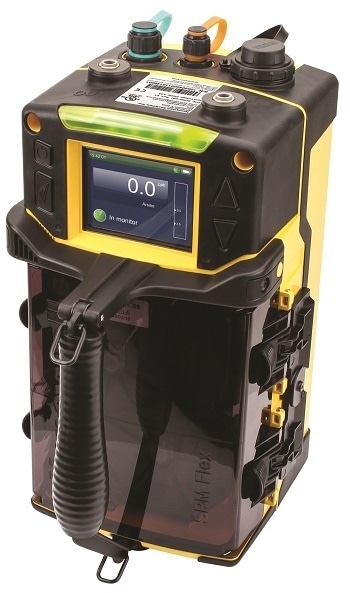May 31 2016
The human nose is particularly sensitive to Hydrogen Sulphide (H2S); a highly offensive odorous gas, reminiscent of rotten eggs.

With an odour threshold between 0.005 ppm and 1.5ppm, relatively low levels of Hydrogen Sulphide can result in complaints if industrial plants generate exposure at these levels. A chemical waste treatment plant in the UK has therefore installed a monitoring and alarm system to generate alerts when H2S concentrations reach levels that might cause concern with staff and the Public. Hydrogen Sulphide is often produced by the breakdown of organic matter in the absence of oxygen, and for this reason it is a major concern for the operators of waste treatment facilities. Hydrogen Sulphide gas is well known as an unpleasant odour; forming, as it does, the main component of the stink bombs that children are able to buy. Stink bombs generally contain Ammonium Sulphide, which, when exposed to air, reacts with moisture to form Hydrogen Sulphide and Ammonia, another unpleasantly odorous gas. One might therefore assume that any problems associated with Hydrogen Sulphide are solely associated with odour nuisance. However, Hydrogen Sulphide is a highly toxic and flammable gas, causing irritation to the eyes, throat and lungs, and can cause death in high concentrations
The maximum occupational exposure level (8 hour time-weighted average) in the UK is 5ppm, with a short term exposure limit of 10ppm. Exposure to levels over 20ppm can cause dizziness, and exposure to over 100ppm can cause death after 48 hours. Levels over 700 ppm cause almost instantaneous death.
The challenge for the monitoring instrumentation sector is to be able to monitor Hydrogen Sulphide at sufficiently low levels continuously without interferences from other gases. So, when Air Monitors was approached by a chemical waste treatment plant looking to install a Hydrogen Sulphide alarm system, the Honeywell SPM Flex was the obvious choice.
The plant regularly treats sewage, so Hydrogen Sulphide is a significant concern, both for plant staff and for the local community. The SPM Flex operates a novel cartridge system that enables users to select the specific gas or gases of interest – H2S in this case, and we connected the instrument to an Envirologger, so that data could be viewed on the web, and so that alarms can be issued in a variety of ways – email, text etc.
Colin Craggs from Air Monitors
With a detection limit of 1 part per billion (ppb) the SPM Flex is extremely sensitive; each cartridge contains a tape which has been impregnated with chemicals that perform analysis of the target gas. The chemical reaction that takes place produces a colorimetric response that, whilst not visible to the eye, is measured by the instrument’s internal optics. For continuous operation, each cartridge lasts for around one month before a change is necessary (the instrument alerts the operator beforehand). However, ‘extended’ cartridges are available which lengthen the operational period to 2 months.
The SPM Flex can also be employed as a portable instrument, running for up to 10 hours on an internal rechargeable battery.
In combination with the selection of cartridges available, this provides an opportunity to respond to an emergency with an instrument that is able to test for the gases of specific concern.
Colin Craggs
In applications where continuous monitoring is required, the SPM Flex can be connected to mains power and the battery effectively becomes a back-up in the event if power failure.
Describing the performance of the SPM Flex at the wastewater treatment plant, Colin says: “The system was installed over 6 months ago, with alarm levels set at 50 ppb, and since that time, alarms have only been issued a handful of times, so the client can rest assured that any unusual H2S levels will be detected quickly, and his staff and neighbours are now protected.
“The key to the success of this system is the sensitivity of the monitor; by setting the alarm level at such a low concentration the wastewater treatment plant is able to raise an alarm before staff and neighbours notice the odour, and in doing so, they ensure that potentially harmful exposure is effectively prevented.”